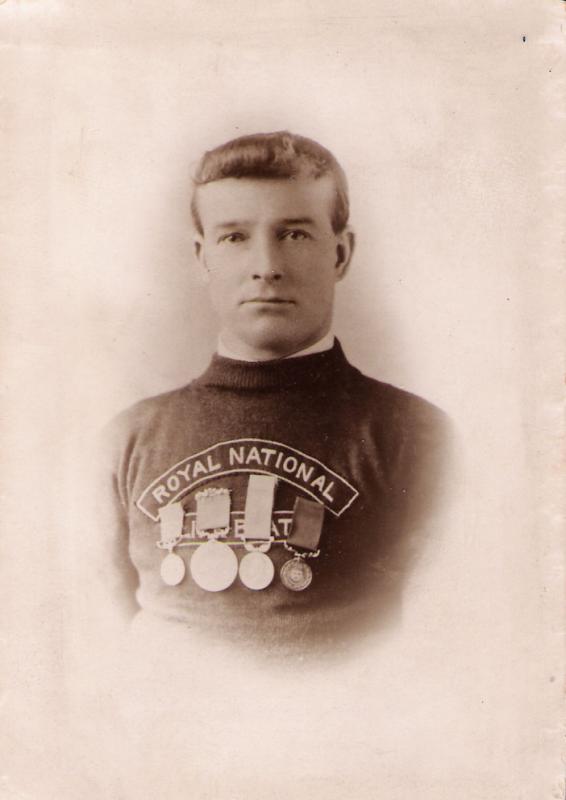
A Motor Lifeboatman’s Story
2nd Coxswain - Tynemouth Lifeboat Henry Vernon

An interesting account of the eventful trip was given by James Brownlee, second coxswain. He said that the motor ran magnificently, and the boat made the journey from the Tyne to Whitby, a distance of about forty four miles, without a stop and without the slightest trouble with the engine. The journey was accomplished in eight-and-three-quarter hours, a very satisfactory record, considering that, although the gale was moderating, there was still very heavy sea. They experienced the worst of the gale when off Hartlepool, where the seas were mountainous, but the boat got through without mishap. On arriving at Whitby, at about one o’clock in the morning, they found that it was impossible to effect the rescue of the shipwrecked people at the time owing to the darkness and to the fact that the heavy seas and the ebb tide were causing a violent current through the narrow channel between the rocks and the Rohilla.
Captain Burton, by means of an electric lamp, signaled in the Morse code to the survivors that help was at hand, and the boat was taken into Whitby, where the mast was unshipped and all superfluous gear taken out, so as to make more room in the boat for the people on board the Rohilla. The lifeboatmen were provided with much-needed refreshment, and after an hour or two of rest, they proceeded to the wreck. The current was still running very strongly, and it was with very great difficulty that the lifeboat manoeuvred alongside the wreck. The Rohilla had broken into three parts. The fore part and the stern had fallen away, and had become submerged, but the midship part was still standing upright, being probably kept steady by the weight of the engines and boilers.
The survivors were clustered about the bridge and the spectacle was most heartrending. Many of the people had very little clothing on, having evidently rushed from their beds when the ship went ashore, and were unable to get back to their cabins again to procure more clothing They had been exposed to the cold and the spray all day long, and were numb, but, weak as they were, they showed great courage and coolness. Some of them lowered themselves by ropes from the wreck, and sprang into the lifeboat as it was carried up against the ship by the sea, and others watched opportunity to jump on board. One man who fell overboard was picked up and pulled into the boat by Brownlee. A number of the survivors ‘had secured empty tins, and had tied them to their necks in order to keep themselves afloat in the event of their being washed overboard.
The whole of the fifty people and the cat were rescued in one trip the work lasting two hours. After they had been landed at Whitby, the motorboat set out on the return journey to the Tyne, which was uneventful.
There were numerous instances of several members of one family being to the fore with comfort and stimulants on the Scar on Saturday. Young ladies who under ordinary circumstances, would have hesitated to venture on the slippery beach, were running hither and thither with blankets, coffee etc., entirely indifferent to the risks involved. Their satisfaction will remain in the memory that, in a locally historic and, trying moment, they were not found wanting.
The bravery of the officers who came ashore by swimming from the ship was noteworthy. One young officer was almost impatient with the workers who rushed to render assistance. “Save the others, and never mind me,” was his continued cry. Fortunately, he was soon in such a state as to be fit to leave, and, before he left the beach; he had the satisfaction of knowing that others who had followed him were saved.
I have added a new page to this website which gives a personal insight into James Brownlee and some very interesting facts.
Copyright © Colin Brittain 1999 - 2014